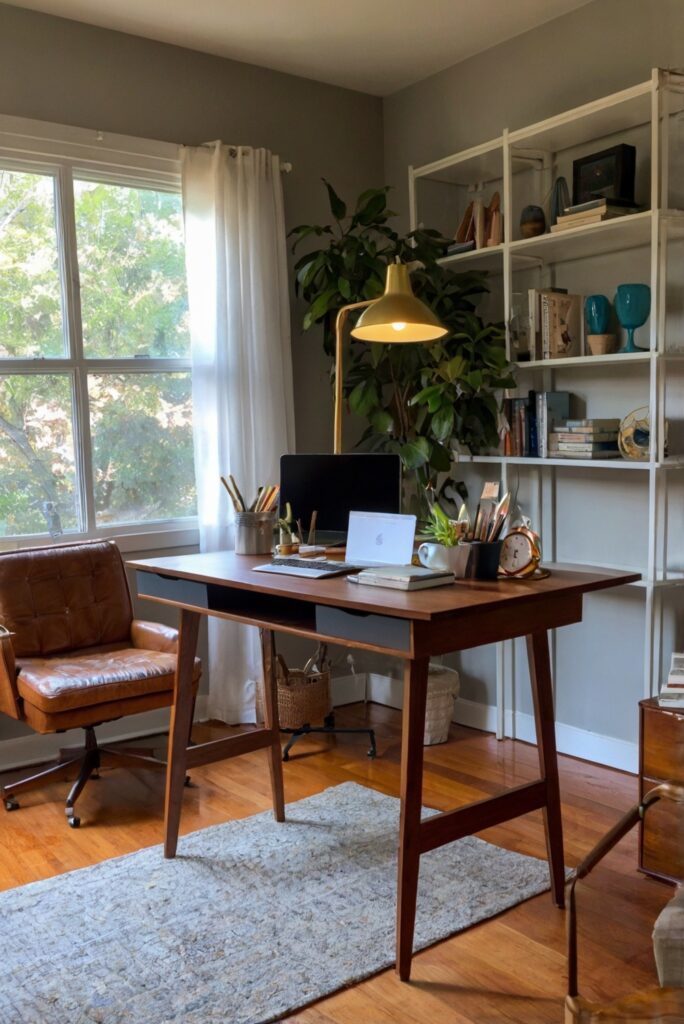Discover the advantages of incorporating a standing desk into your home office routine. Enhance productivity and improve posture with this simple yet effective decor addition.
**What are the Benefits of a Standing Desk in a Home Office?**
Answer:
A standing desk in a home office offers various benefits for both health and productivity. It helps in reducing the risk of sedentary lifestyle-related health issues, such as back pain and obesity. Standing desks also promote better blood circulation, increased energy levels, and improved focus while working. They can be a stylish addition to home decor interior design, enhancing the overall look of the workspace. To make the most out of a standing desk, combining it with ergonomic furniture and proper space planning is crucial. Regularly switching between sitting and standing positions is key for comfort and productivity.
Benefits of a Standing Desk in a Home Office
Standing desks have gained popularity in recent years due to their numerous benefits. Incorporating a standing desk into your home office setup can have a positive impact on your health, productivity, and overall well-being.
Improved Posture and Reduced Back Pain
One of the key benefits of using a standing desk is improved posture. Sitting for extended periods can lead to poor posture, which can result in back and neck pain. Standing while working encourages better alignment of the spine and helps strengthen core muscles, reducing the risk of back pain.
Increased Energy and Focus
Standing desks can also help boost energy levels and enhance focus. Standing while working promotes better circulation, which can prevent feelings of sluggishness and fatigue. The act of standing can increase alertness and concentration, leading to improved productivity throughout the day.
Calories Burned and Weight Management
Another significant benefit of using a standing desk is the potential to burn more calories compared to sitting. Standing requires more energy expenditure than sitting, contributing to a higher calorie burn rate. Over time, this can help with weight management and overall health.
Enhanced Mood and Creativity
In addition to the physical benefits, standing desks can also have a positive impact on mental well-being. Standing while working can improve mood and reduce feelings of stress and anxiety. This can lead to greater creativity and a more positive outlook on tasks and projects.
Reduced Risk of Chronic Diseases
Research has shown that prolonged sitting is associated with an increased risk of chronic diseases such as heart disease, diabetes, and obesity. By incorporating a standing desk into your home office, you can reduce the amount of time spent sitting and lower the risk of developing these conditions.
In conclusion, the benefits of using a standing desk in a home office are numerous and significant. From improved posture and reduced back pain to increased energy and focus, standing desks offer a range of advantages for both physical and mental well-being. By making the switch to a standing desk, you can enhance your overall health, productivity, and quality of life.
1. Improved Posture:
One of the key benefits of using a standing desk in a home office is the improvement in posture. Sitting for long periods can lead to slouching and back pain, while standing encourages better alignment of the spine and shoulders.
2. Increased Energy Levels:
Standing while working can help boost energy levels and reduce feelings of fatigue. It promotes better circulation and keeps you more alert throughout the day.
3. Better Focus and Productivity:
Standing desks have been shown to enhance focus and productivity. By standing, you may experience improved cognitive function and increased efficiency in completing tasks.
4. Reduced Risk of Health Issues:
Research has linked excessive sitting to various health issues such as obesity, heart disease, and diabetes. Using a standing desk can help lower these risks and improve overall health.
5. Flexibility and Movement:
Standing desks provide the flexibility to switch between sitting and standing throughout the day, allowing for more movement and reducing the negative impact of prolonged sitting.

